Sergey Gurskiy hasn't done a ton of artwork for Flesh and Blood, but within his small body of work sits perhaps the most iconic card in the game: Fyendal's Spring Tunic.
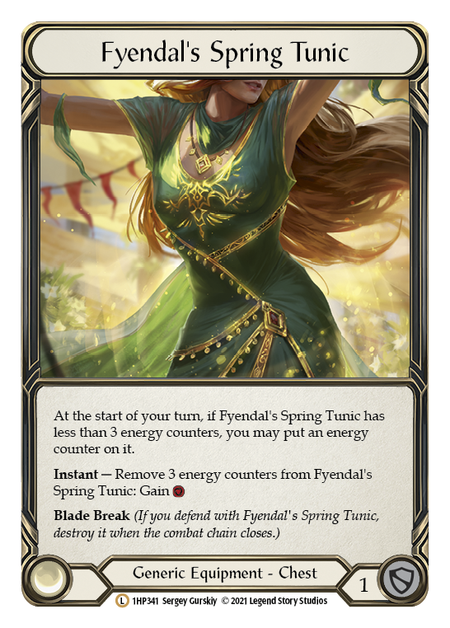
The emerald and gold design of the Spring Tunic holds a special place in the hearts of the FAB community. Whether worn by Fyendal or simply in her honor, the Tunic is never explained but certainly tantalizes. The art of Tunic has been featured on playmats and card sleeves. It's become the symbol of the cosplay community, and its in-lore designer Taylor serves as the coveted prize for the hobby's side events; even a bolt of its iconic fabric print has become a card.
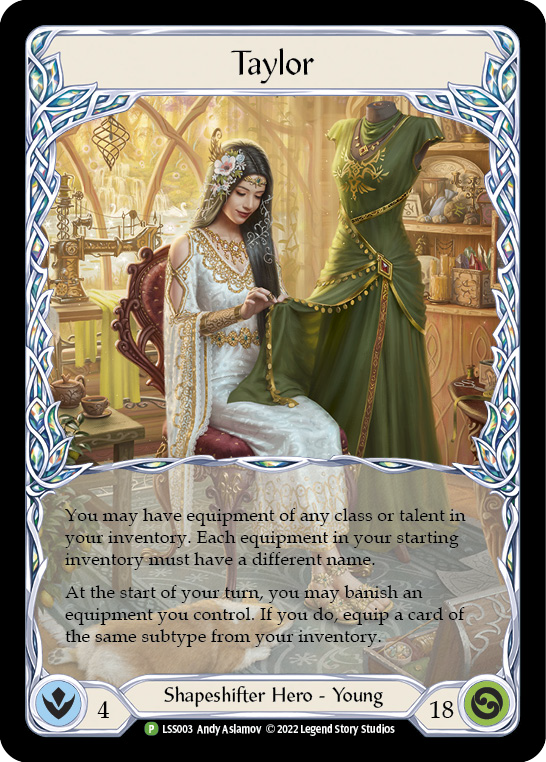
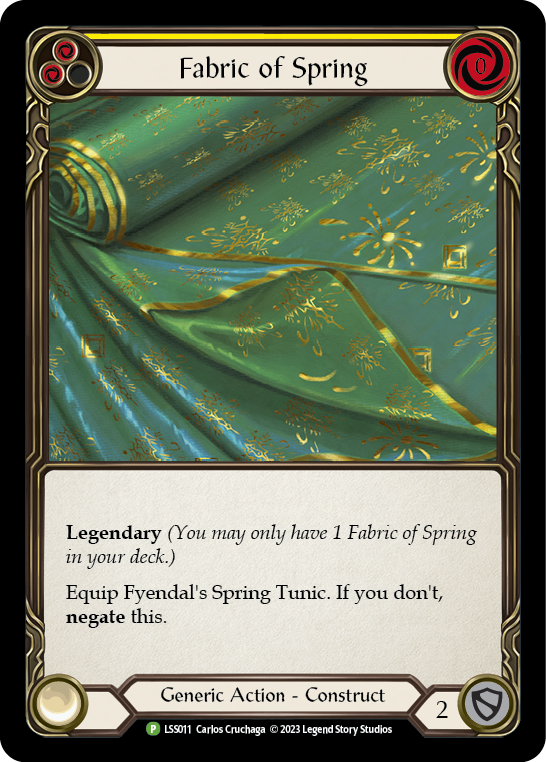
The first 'staple' of the game, Tunic's generic status quickly gave it prominence as the default chest equipment for any class that didn't have a dedicated legendary card for the slot - and even among the classes that did, Tunic often won for its flexibility and value.
As the years have passed, Fyendal's Spring Tunic hasn't missed a step. It remains competitive even as more classes receive chest equipment designed specifically for their needs. At present, the Tunic is a leading card choice for Assassins, Brutes, Ninjas, Rangers, and Wizards; even Bravo and Prism have fringe builds that prefer the Tunic.
This ubiquitousness has led many to view Fyendal's Spring Tunic as a barrier to entry. Today, it will set you back $80 USD to pick one up on TCGPlayer, a price point accomplished by its 4th in-set printing - you'll find Fyendal's Spring Tunic in Welcome to Rathe, Crucible of War, and Bright Lights, along with the extensive reprinting of WtR that makes up History Pack 1.
At present, Fyendal's Spring Tunic is a leading card choice for Assassins, Brutes, Ninjas, Rangers, and Wizards; even Bravo and Prism have fringe builds that prefer the Tunic.
So is this healthy for Flesh and Blood? Are we comfortable with its role as the default for decklists? And can we, in good conscience, recommend this game to new players knowing this purchase is essentially a prerequisite of competitive play?
Does Tunic Deserve the Hype?
Before we go much further, we have to critically consider: is Tunic even that good? Or has it simply coasted on a reputation, unexamined in the face of growing alternatives?
We've seen that Tunic can be shown up by class-specific alternatives that can tap into synergies more directly. Dromai absolutely prefers the rebates offered by the Flamescale Furnace, while Mechanologists and Guardians simply prioritize block values with Teklo Foundry Heart and Tectonic Plating, respectively.
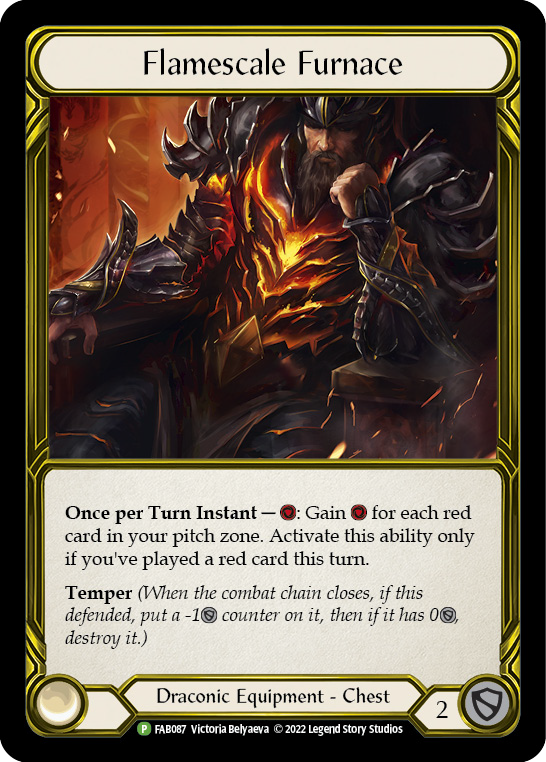

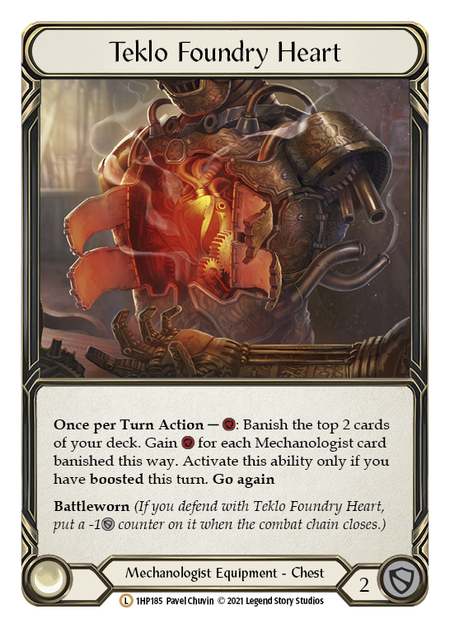
Perhaps a more interesting dynamic is seen in Blitz, where Blossom of Spring - by all appearances a simple budget alternative to Tunic - is often chosen for its edge in the faster format.
This shows a designed vulnerability in Tunic, an angle from which new options can compete for relevancy. Tunic provides a recurring source of free resources- but on its own timetable. If you need that resource at a specific moment, Tunic may not be there for you when you need it.
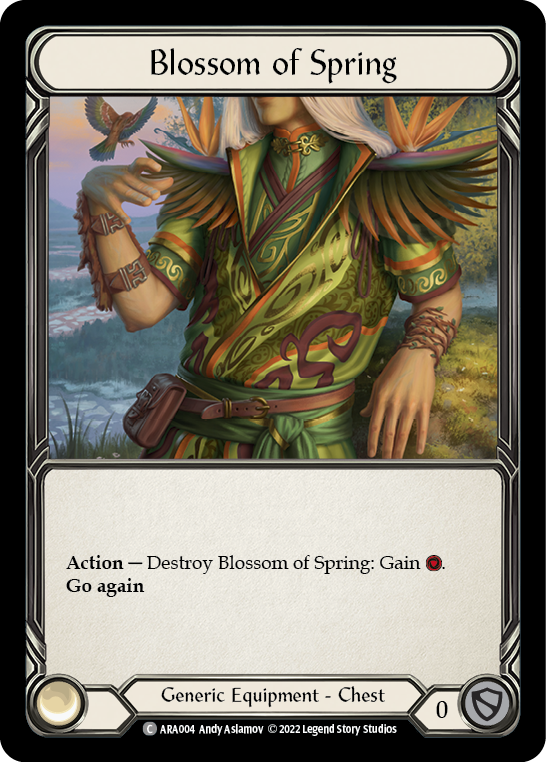
That said, Fyendal's Spring Tunic remains a staple of multiple classes after years of expansions. Its ability is flexible and timeless; and even in classes with spectacular chest equips, Tunic still makes showings in specific builds. Bravo, for example, has been known to set aside his armor for the green garment in more aggressive lists.
In good conscience, I can't make the claim that Tunic is overrated. It has remained mechanically potent, strategically relevant, and singular in its position in the game. There are play patterns - such as Command and Conquer into Pummel - that simply don't work without Tunic's free resource.


I don't think it's overselling it to say Fyendal's Spring Tunic is the single most influential purchase for a player looking to get serious about Flesh and Blood. You'll hear from many that Tunic is an expense you should stomach as soon as possible. You will use it, regularly, and the sooner you own, it the more mileage you'll get out of it.
Does Tunic Deserve the Hate?
Tunic is, essentially, a required acquisition for long-term competitive play. You may not need it in any given deck; but unless you're firmly tied to one and only one class and it happens to be a class that prefers its own chestpiece, you will probably find yourself in want of a Tunic sooner rather than later.
That said, if you're playing Armory level, you don't need a Tunic. You can play other equipments in that slot, and lean into the unique benefits those offer.
But the inverse of that is really relevant to the conversation too: if you have Tunic, you can use it in place of most class-specific chest equips with little damage to the deck's performance. Dromai will miss the armor from Furnace, but she'll still get free resources to round out her turns. It's a comfort knowing you've got a great card for that slot every time you venture into a new deck. And while long-term you may want to acquire that highly-specific Empyrean Rapture/Vestige of Sol (currently Prism is using both), you can get some reps in with your good ol' Tunic before investing in a deck you may not have long-term interest in.
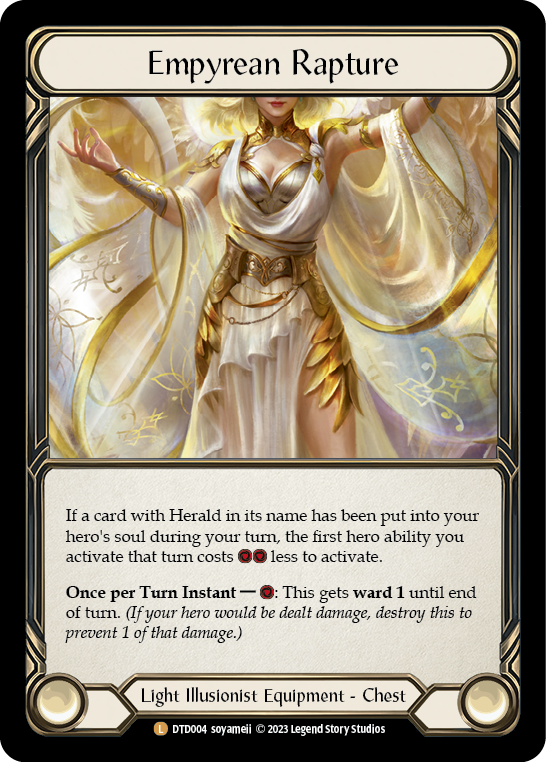

Is it good for the game to have a Legendary card that every player needs? As with all things, there are arguments to be made on each side.
From the perspective of accessibility and a level playing field, the irrefutable answer is no. But the goal of 'accessible to all budgets' is absurd on its face: after all, trading card games are a luxury good, and one person's cheap card is prohibitively expensive to another. Is a $50 card too costly? $15? $5? Ask five people and you're likely to get five different answers. At $80 Tunic is the same price as a playset of Art of War or a single copy of Command an Conquer. If you think of it as one purchase that fuels your competitive prospects... forever... well, is that a worse investment than ten $10 class majestics that you might bench in your next build or abandon completely with a pivot to another class?
If you think of Tunic as one purchase that fuels your competitive prospects forever, is $80 that unreasonable?
Tunic looks a lot better when you compare it to another ubiquitous generic equipment slot: the headpiece. Arcanite Skullcap used to be the go-to head equip across multiple classes, and fetched prices comparable to Tunic. But in time, Crown of Providence usurped Skullcap's ubiquity. Now Balance of Justice is threatening the same. In each instance, the new card hasn't divided the market across the multiple options; instead, the new card has stolen market shares from what came before, devaluing the cards you'd invested in.
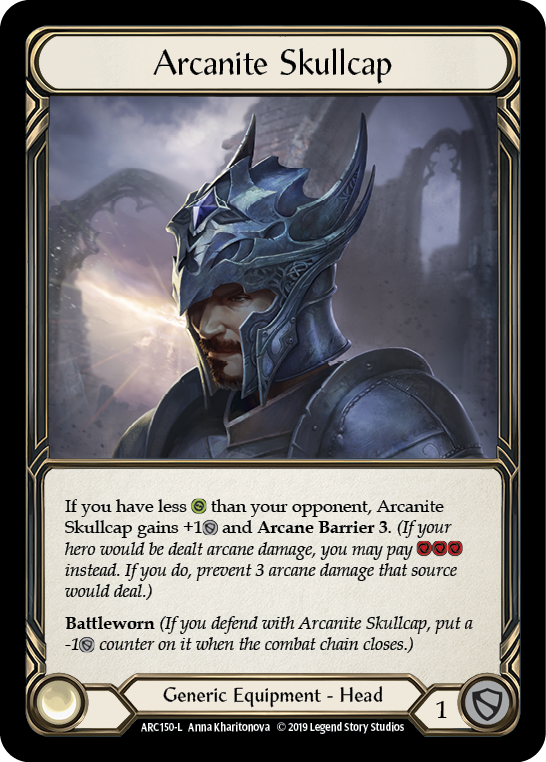
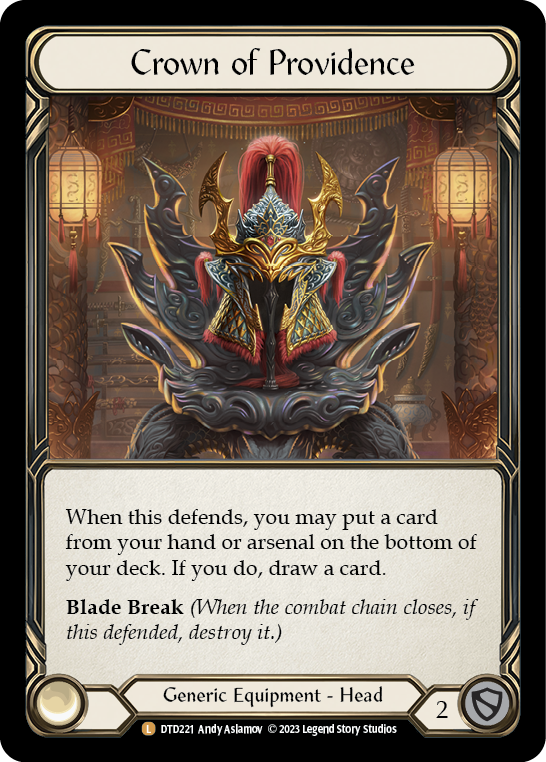

This is a well-documented part of the TCG market, and one we've all been conditioned to accept - but it does kind of suck. I think at a certain level, those of us who have done TCGs before expect it - and it colors how we evaluate a high-cost essential like Tunic. "De-value it already!" we shout, assuming LSS' long-term intent is to power creep over the top of it with a future release. "Print it into the ground!" we ask, assuming they'll go for the cash grab at some point.
But perhaps that isn't their intent at all. Thus far, they've skipped every opportunity to cut into Tunic's value in your collection, instead putting more copies of the OG into circulation. These reprints have corresponded with growth of the player base, and have been carefully calibrated to make more available without flooding the market.
In short, Fyendal's Spring Tunic may be the most perfectly executed high-end staple in TCG history.
Fyendal's Spring Tunic may be the most perfectly executed high-end staple in TCG history.
Respect the Classic
There's a real concern about accessibility and affordability underlying people's negative impression of expensive staples. But I feel it's important to consider expensive cards with more discernment than simply grouping by price. On some level, players are already doing that: an alt art Marvel is different than an unplayable Fabled is different than a Cold Foil treatment is different than a Legendary is different than a staple generic Majestic.
Fyendal's Spring Tunic cannot be considered equally with the similarly-priced Command and Conquer; the impact of a single copy of a card shuffled into a 60-card deck can't compare with the impact of an always-on-board effect; and yet new players are often led to believe both must be acquired before they can jump into competitive play. One of these barriers is not like the other...
I'd encourage you to talk about Tunic differently. It may be an essential, practically required purchase - but it's one that can truly be considered a strong investment in your FAB experience.




